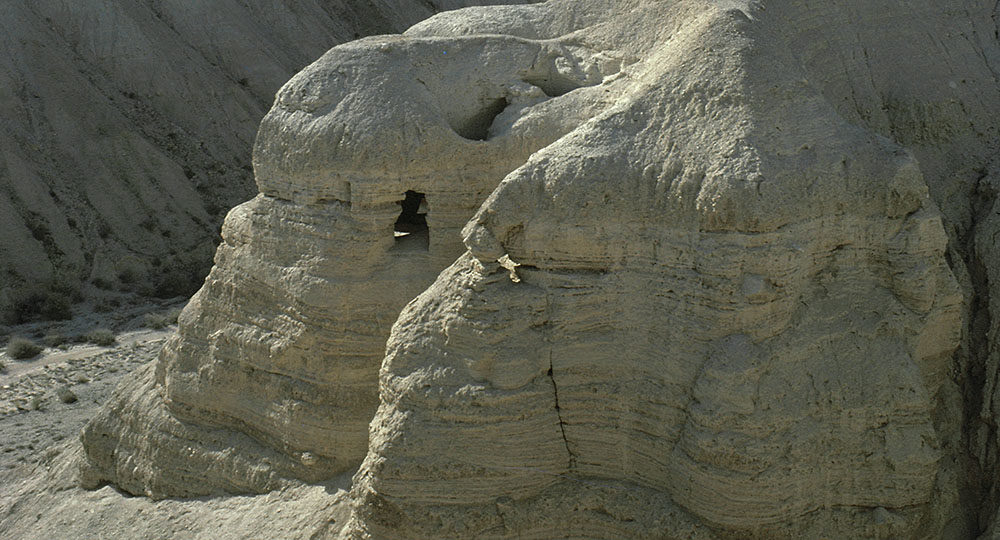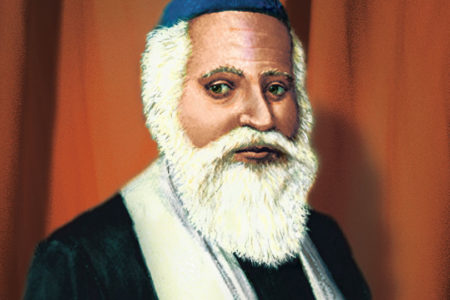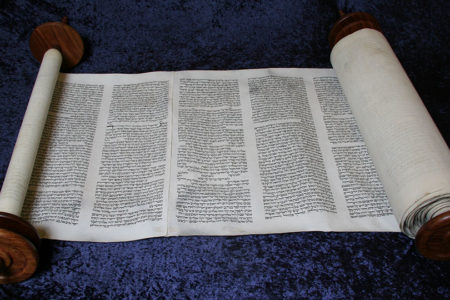Scrolls, Souls, and the ‘Da Vinci Effect’
With the exception of perhaps a handful of Tibetan monks living in the shadows of the Himalayan mountains or the isolated tribal groups of South America, it is hard to imagine people who have not heard something about Dan Brown’s novel, The Da Vinci Code. It has been on The New York Times Best Seller list since its release in 2003 and has been a bestseller in some 150 countries. Film director Ron Howard and megastar Tom Hanks are teaming up for the movie version, set for release in May. The novel contends, among other things, that Mary Magdalene was married to Jesus and bore His children.
Because Brown’s fiction work not only deals directly with the life of Christ and the validity of the New Testament, but also creates a misleading aura of factuality, it needs to be addressed. Happily, a number of credible books have been published, exposing the novel’s multiple inaccuracies and myths parading as fact. May their tribe increase.
I will address only two of the vacuous speculations passed on to us from the Da Vinci effect (my phrase, for want of a better one).1 These are:(1) that the Dead Sea Scrolls are part of the “earliest Christian records” and (2) that the ancient, heretical documents found at Nag Hammadi, Egypt, are a more faithful historical record of Jesus than the New Testament Gospels.
As to the first point, the “seer” of Brown’s book, a character named Sir Leigh Teabing, solemnly opines,
“These are photocopies of the Nag Hammadi and Dead Sea Scrolls, which I mentioned earlier,” Teabing said. “The earliest Christian records. Troublingly, they do not match up with the gospels in the Bible.”2
Ah yes, but there is even nastier intrigue afoot. Teabing expounds that these two sets of ancient documents “highlight glaring historical discrepancies and fabrications, clearly confirming that the modern Bible was compiled and edited by men who possessed a political agenda—to promote the divinity of the man Jesus Christ and use His influence to solidify their own power base.”3
So, let’s take a quick look at these two ancient sources, the Dead Sea Scrolls and the documents found at Nag Hammadi, and see what they do (or do not) prove about the New Testament record on the life of Christ.
In the Caves of Qumran
The Dead Sea Scrolls consist of, among other things, 225 Old Testament manuscripts, about 215 of which were discovered in 11 caves at Khirbet Qumran near the Dead Sea in Israel; the other 10 were found nearby at Wadi Murabba ‘at, Nahal Hever, and Masada. They contain every book of the Old Testament, with the exception of Esther.4 The latest dates from around A.D. 68; the earliest, from around 250 B.C.5 They represent the oldest version of the Old Testament in existence.6
So, is Jesus mentioned in the Dead Sea Scrolls? No. The Qumran religious community during the first century was not Christian; it was a remote and separatist desert sect of Judaism. Most scholars believe it was a part of, or related to, the Essenes; and there is a virtual “consensus” among Dead Sea Scrolls scholars that those scrolls do not address Christ or the early church:
The Qumranites…existed during the time of the ministry of Jesus of Nazareth (26–30 C.E.). But none of the Dead Sea Scrolls refer to him, and they do not mention any follower of Jesus described in the New Testament.7
Even the ultraliberal and antiorthodox Robert Funk and the Jesus Seminar must concede that, on the only possible New Testament-Qumran link (John the Baptist as a desert-dwelling, Qumran “Essene”), the evidence is simply not there.8 Funk founded the Jesus Seminar, which disputes most of Jesus’ miracles and contends He did not rise from the dead.
The bottom line is that the Dead Sea Scrolls are in no sense a “Christian record,” as Dan Brown’s novel suggests. Nor do they contradict the New Testament.
What these scrolls from Qumran do give us is added proof that the Old Testament we possess is eminently reliable. They document how tirelessly those books were copied, even under the harsh, unforgiving conditions of the desert region near the Dead Sea. For instance, in the book of Ruth, “all four texts [discovered] plus the one recorded in the traditional Masoretic Text exhibit the same language with only minor, unimportant variants.”9
Regarding the book of Leviticus: “The text is similar to the Masoretic text, the traditional text of the Hebrew Bible, and it proves that little change occurred over the centuries.”10
Several copies of the entire book of Isaiah were found. Amazingly, the differences between the version of Isaiah in your Bible and that scribed in the deserts of the Dead Sea from 120 B.C. to A.D. 60 are limited to minor variations of spellings or exclusions of some verses from some texts but inclusions in others—variations that are “insignificant for purposes of understanding or interpretation.”11
Simply put, the Dead Sea Scrolls constitute one more piece of evidence that the Bible you read was faithfully transmitted, first from eyewitnesses, and then through the centuries by dedicated scribes and copyists.
An Ancient Heresy Uncovered
Quite different from the Dead Sea Scrolls are those ancient texts found at Nag Hammadi in 1945 by an Egyptian peasant who later sold them the following year to a dealer in Old Cairo. None of them are “New Testament”: they contain none of the books from Matthew to Revelation. In fact, they contain sayings and accounts of the life of Christ that resulted from Gnostic heresy in the centuries following the original New Testament autographs. That heresy sought to re-explain the meaning of Christ’s ministry from the philosophical perspective of speculation and paganism. Paul’s admonition against those who promote a “different gospel” and “pervert [distort] the gospel of Christ” (Gal. 1:6–7) reminds us that the truth of Christ has, from its inception, been plagued by those who would “cheat you [take you captive] through philosophy and empty deceit, according to the tradition of men, according to the…world, and not according to Christ” (Col. 2:8).
The Da Vinci Code, however, promotes these Gnostic gospels as more authentic than the four Gospels of the New Testament. Nothing could be further from the truth.
The “Gospel According to Phillip,” for example, which is at the core of Dan Brown’s novel, makes the preposterous claim that Jesus was married to Mary Magdalene. Its fragments were among the Nag Hammadi texts. It refers to Mary as Jesus’ “companion” (though never mentions the word marriage or married). And when was it penned? According to Bentley Layton, a scholar on the Gnostic gospels, it dates around A.D. 350.12 That was more than 250 years after the creation of the New Testament Gospels!13
Or how about the most popular “Gnostic” text touted by modern-day heretics: the “Gospel According to Thomas.” To quote again from Robert Funk and the Jesus Seminar (not exactly friendly to the evangelical view of Scripture), that text “contains one hundred fourteen sayings and parables, but lacks a narrative structure” regarding the life of Jesus.14 In other words, it contains little that we can use to evaluate the life and ministry of Christ from a historical perspective.
It is noteworthy that even the Nag Hammadi “experts” have concluded that those texts were “buried…by unknown persons, [for reasons]…not specifically known,” and we know nothing about the original source of the information contained in them; and what is true of the “Gospel According to Phillip” is also true of the other Nag Hammadi texts: their authorship and the identity of their compilers “are completely unknown.”15
From an objective, historical standpoint, to base any conclusions regarding the life of Jesus Christ on the “Gnostic” texts from Nag Hammadi, or to contend that they eclipse the New Testament record, is nonsense.
A Record Worth Relying On
The New Testament record of the life, ministry, miracles, death by crucifixion, and resurrection of Jesus Christ should be considered among the most documented facts of ancient history. Beyond the Christian record, the ancient Jewish historian Josephus mentioned Jesus. Tacitus, the great ancient Roman historian from the first century, wrote about Him and mentioned His crucifixion under Pontius Pilate. Another Roman chronicler, Pliny the Younger, also referred to Christ as someone worshiped “as God.”
The biblical Gospels were written during the first century, when many of the witnesses to Jesus’ actions and words were still alive; and one of the earliest factual recitations about Him dates around A.D. 54, in Paul’s First Epistle to the Corinthians, written a mere 20 years after the crucifixion. It sums things up this way: “Christ died for our sins according to the Scriptures, and that He was buried, and that He rose again the third day according to the Scriptures, and that He was seen by Cephas [Peter], then by the twelve” (15:3–5). (See endnote 13.)
It is quite telling that we have no debatable, alternate explanations from that period disproving this bold claim of resurrection following a public execution. The logical explanation is that the fact of Jesus’ divinity and resurrection was amply clear to those who were actual witnesses, and His opponents could not convincingly concoct an alternate explanation that would hold water.
Rather than the early church concealing the truth about Jesus by suppressing the “Gnostic” versions discovered at Nag Hammadi (the theory of The Da Vinci Code), precisely the opposite is the case: the New Testament versions, written by eyewitnesses or from eyewitness sources, were more reliable and generally accepted because they were accurate. The heretical counterfeits penned much later were soundly (and wisely) criticized and rejected as deceptive, dangerous distortions of the truth.
The Weight of the Evidence
Lawyers, when they argue to the judge or jury, often talk about the “weight of the evidence,” that is, which way the scales tip based on the credible evidence from witnesses who have actual knowledge. You can trace the New Testament to the original apostles who witnessed the events and authored the documents during the generation of first-century Jerusalemites, who could have challenged the accounts if they had been inaccurate. The historical accuracy of these accounts is an independent verification of their reliability.
Paul wrote about “Erastus, the treasurer of the city” at Corinth (Rom. 16:23). When archaeologists in 1927 uncovered an inscription from that period, in that city, referring to that very person, the historicity of the New Testament was underscored yet again.16 The Gospel of John refers to healings Jesus performed at the Pools of Bethesda and Siloam (Jn. 5:1–8; 9:1–41). Archaeology has corroborated these sites.17 There are literally hundreds of archaeological verifications for the books of the New Testament.
Then, in the ages after the first century, a line of church fathers, such as Irenaeus and Justin Martyr, consistently validated the New Testament record in their writings for two more centuries. By the fourth century, the early church recognized (but did not “create”) the accepted canon of New Testament books because those books had been proven consistently to be authentic and accurate. The Da Vinci Code’s claim that the canon resulted from a political power play rests on bald and fanciful speculation, not on fact.
Obviously, this is serious stuff. The eternal future of human souls rests on this issue, because only by receiving the witness of the true Word of God (the “sacred writings”) is it possible to gain the wisdom that leads us to “salvation through faith which is in Christ Jesus” (2 Tim. 3:15).
So, the evidence is in. The court awaits your verdict. What say you?
ENDNOTES
- This “effect” first begins with a lesser-known theory (in this case, a book originally published in 1982 called Holy Blood, Holy Grail, by Michael Baigent, Richard Leigh, and Henry Lincoln) containing a complex and wild argument for Jesus’ union with Mary Magdalene and that it led to children who supposedly can be traced to the unlikely lineage of the monarchs of France. Next, that theory is codified in a more popular form, The Da Vinci Code, which then explodes it into the mass culture and creates a “phenomenon” that often persuades the gullible and uninformed.
- Dan Brown, The Da Vinci Code (New York: Doubleday, 2003), 245.
- Ibid., 234–235.
- Martin Abegg Jr., Peter Flint, and Eugene Ulrich, eds., The Dead Sea Scrolls Bible (San Francisco: Harper, 1999), 630.
- Ibid., xiv.
- Also discovered were regulations for the Qumran religious community and various “commentaries” on the Old Testament.
- James H. Charlesworth, ed., Jesus and the Dead Sea Scrolls (New York: Doubleday, 1992), xxxv.
- Robert W. Funk and the Jesus Seminar, The Acts of Jesus (San Francisco: Harper, 1998), 164.
- Abegg., Flint, and Ulrich, 607.
- Israel Antiquities Authority, Scrolls From the Dead Sea: An Exhibition of Scrolls and Archaeological Artifacts (Washington, D.C.: Library of Congress, 1993), 48.
- Abegg, Flint, and Ulrich, 268.
- Bentley Layton, The Gnostic Scriptures (New York: Doubleday, 1987), 326.
- Even Robert Funk and the Jesus Seminar admit the four biblical Gospels were written from A.D. 70 to 90. And Bentley Layton notes that the apostle Paul’s resurrection account of Christ dates back to around A.D. 54 (Layton, The Gnostic Scriptures, 316).
- Robert W. Funk and the Jesus Seminar, 555.
- Layton, 323.
- F. Bruce, The New Testament Documents: Are They Reliable? (Downers Grove: InterVarsity Press, 1977), 95.
- John McRay, Archaeology and the New Testament (Grand Rapids: Baker Book House, 1999), 186–192.






